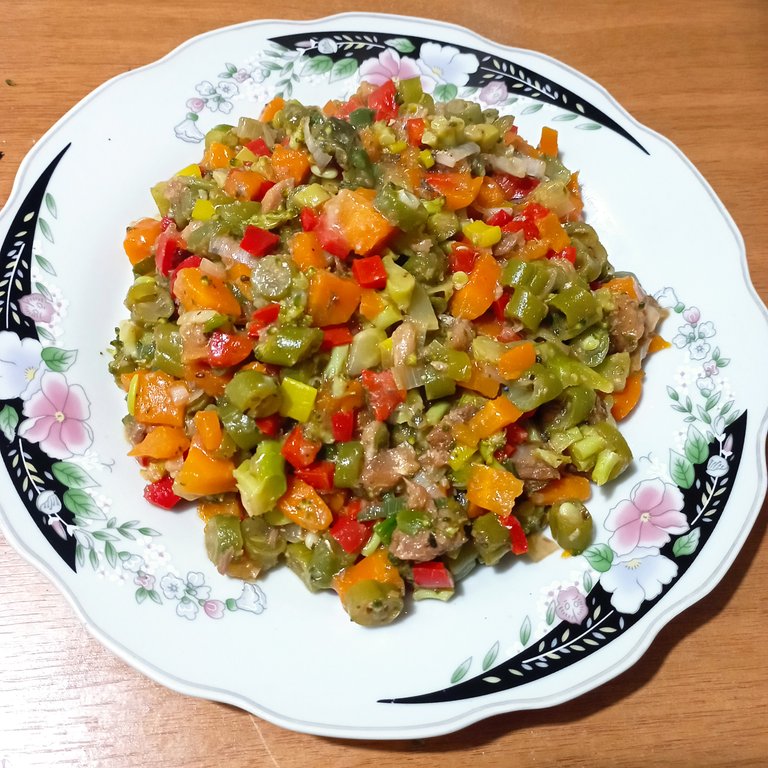

| Vegetable antipasto with canned fish. | Antipasto de vegetales con pescado en conserva. |
|---|---|
This is the first time I make an antipasto and if like me you wonder where the word comes from, I will tell you that this word results from the composition of two words; anti which comes from the prefix before and pasto which translated into Italian means food and as its name indicates it is commonly served as an appetizer before the main course and today I decided to prepare my version of antipasto based on what the memory of my palate suggested to me. To prepare an antipasto like the one I am presenting today we will need the following, but let's remember that everyone can make their own interpretation using the ingredients of their choice. | Es primera vez que hago un antipasto y si como yo se preguntan de dónde viene la palabra, les contaré que esta palabra resulta de la composición de dos palabras; anti que viene del prefijo antes y pasto que traducido al italiano que traducido al italiano significa comida y como su nombre lo indica comúnmente se sirve como aperitivo antes del plato principal y hoy me animé a preparar mi versión del antipasto basándome en lo que la memoria de mi paladar me sugirió. Para elaborar un antipasto como el que hoy presento necesitaremos lo siguiente, pero recordemos que cada uno puede hacer su propio interpretación utilizando los ingredientes de preferencia. |

Ingredients:
1/2 cauliflower, not too big.
200 grams of vanitas.
1 medium carrot.
1 large branch of chives.
1 red or yellow bell pepper.
1 can of sardines of 300 grams. Tuna or horse mackerel can be substituted.
1 tablespoon garlic paste.
2 tablespoon of soy sauce.
1/2 lemon.
Salt.
Cumin.
oil.
Dried basil.

1/2 coliflor no muy grande.
200 gramos de vainitas.
1 zanahoria mediana.
1 rama grande de cebollín.
1 pimentón rojo o amarillo.
1 lata sardina de 300 gramos. Se puede sustituir por atún o jurel.
1 cucharada de pasta de ajo.
2 cucharada de salsa de soya.
1/2 limón.
Sal.
Comino.
Aceite.
Albahaca seca.

| First Step | Primer Paso |
|---|---|
Believe it or not, this recipe is very easy to prepare although it takes a little time because it is double cooked. The first thing to do is to wash the vegetables well and place them in a pot with plenty of water. It is necessary that the water covers the vegetables completely. We let them boil until they are tender. It is necessary to mention that the broccoli and the pods are cooked first than the carrot so it is necessary to be attentive to remove them from the boiling water and leave a few minutes more carrot. | Aunque no lo crean está receta es muy sencilla de preparar aunque se toma un poco de tiempo porque es de doble cocción. Lo primero que haremos es lavar bien los vegetales y los colocamos en una olla con abundante agua. Es necesario que el agua cubra totalmente los vegetales. Los dejamos hervir hasta que estén tiernos. Es necesario mencionar que el brócoli y las vainitas se cuecen primero que la zanahoria así que es necesario estar atentos para retirarlos del agua hirviendo y dejar unos minutos más zanahoria. |

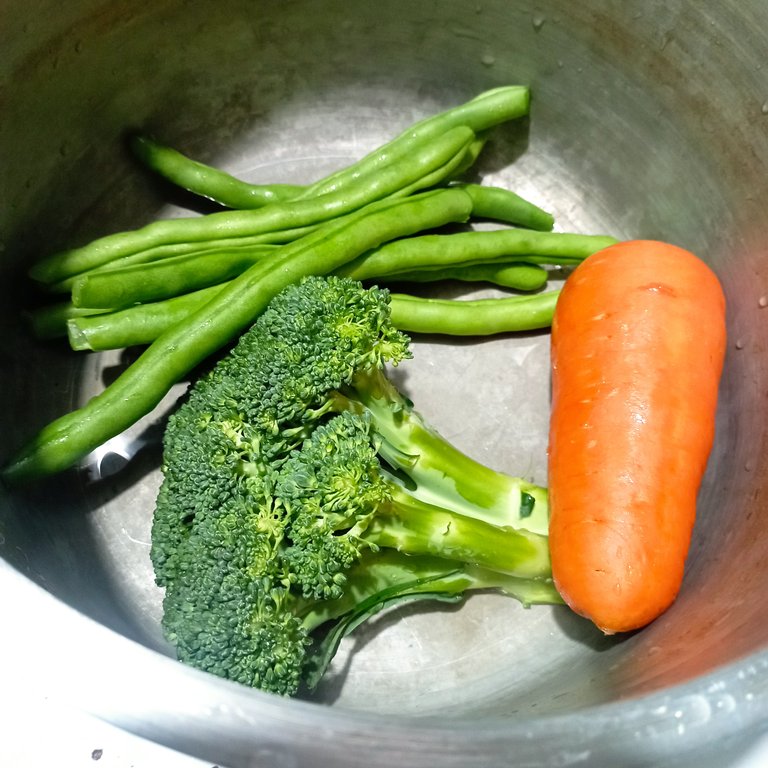

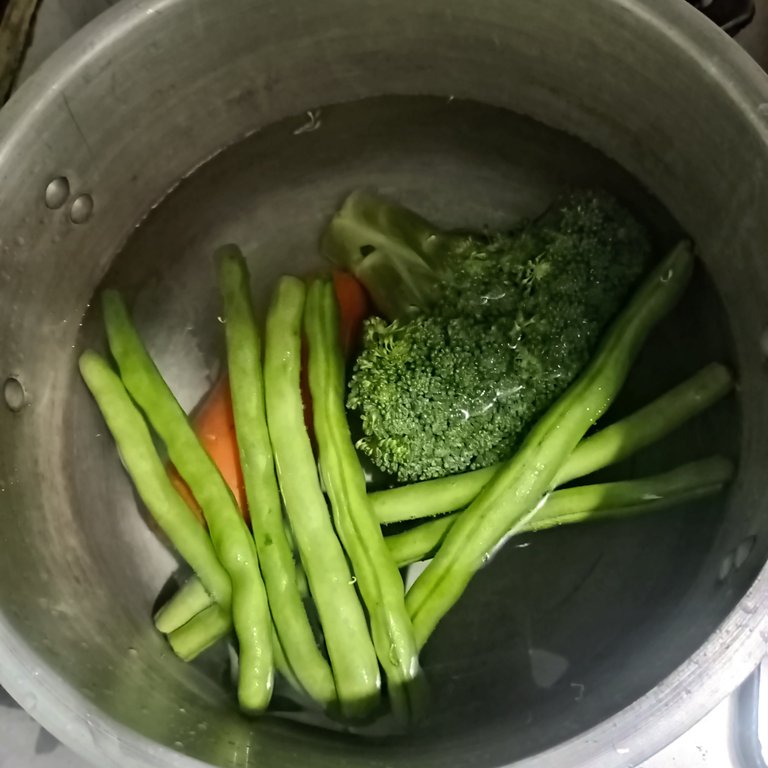

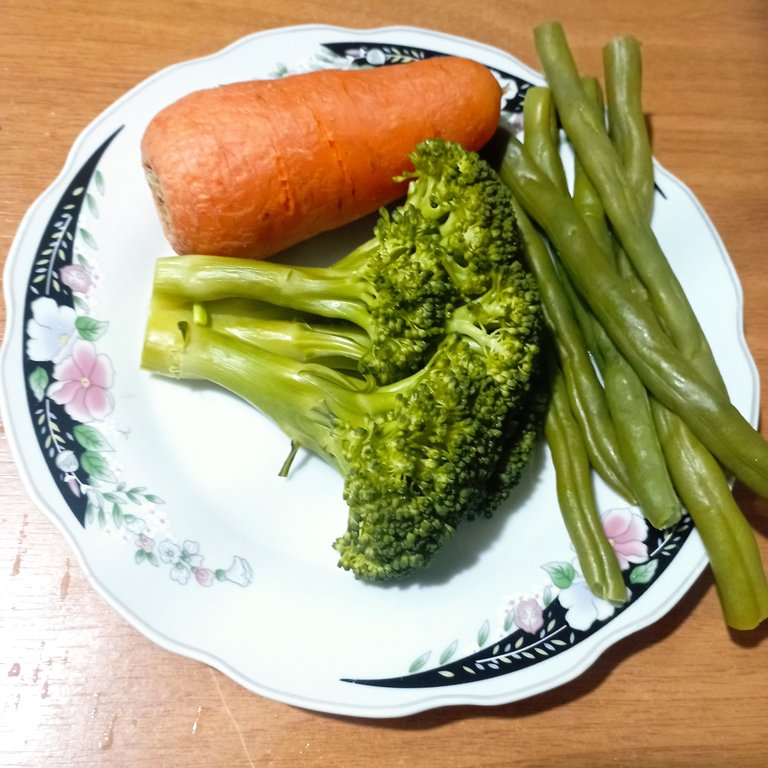

| Second Step | Segundo Paso |
|---|---|
When the vegetables are cooked, cut them into small squares. The cut in the antipasto is important and should be very small so that all the flavors are integrated very well and it has its particular texture. Now it is the turn of the rest of the vegetables. We cut the chives and the paprika. Heat a large pot or frying pan with a splash of oil and pour the chives and paprika. | Cuando tengamos cocidos los vegetales los cortamos en cuadros pequeños. El corte en el antipasto es importante y debe ser muy pequeño para todos los sabores se integren muy bien y quede con su particular textura. Ahora es el turno del resto de los vegetales. Cortamos el cebollín y el pimentón. Colocamos a calentar una olla o sartén amplio con un chorro de aceite vertemos el cebollín y el pimentón. |

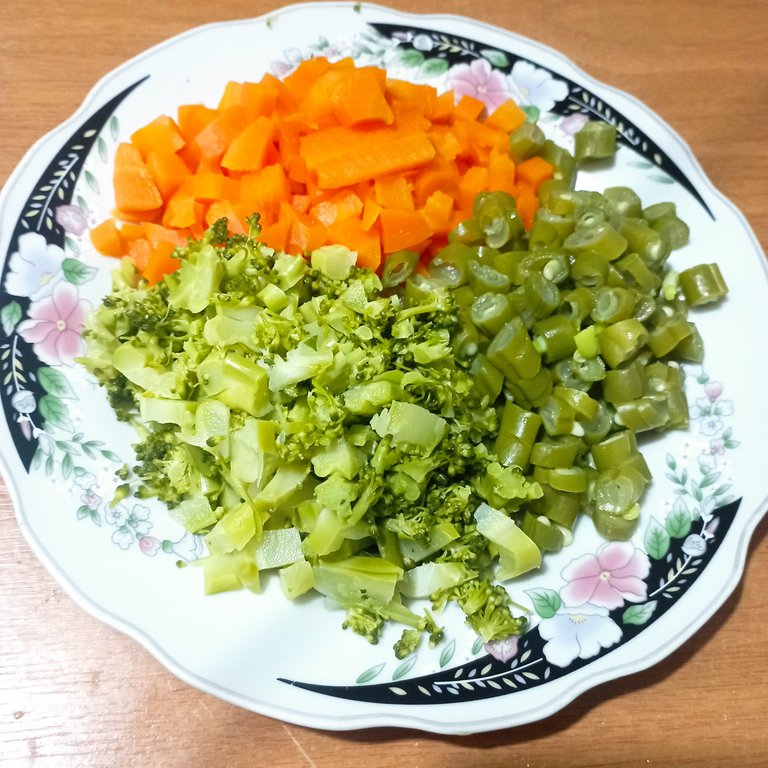

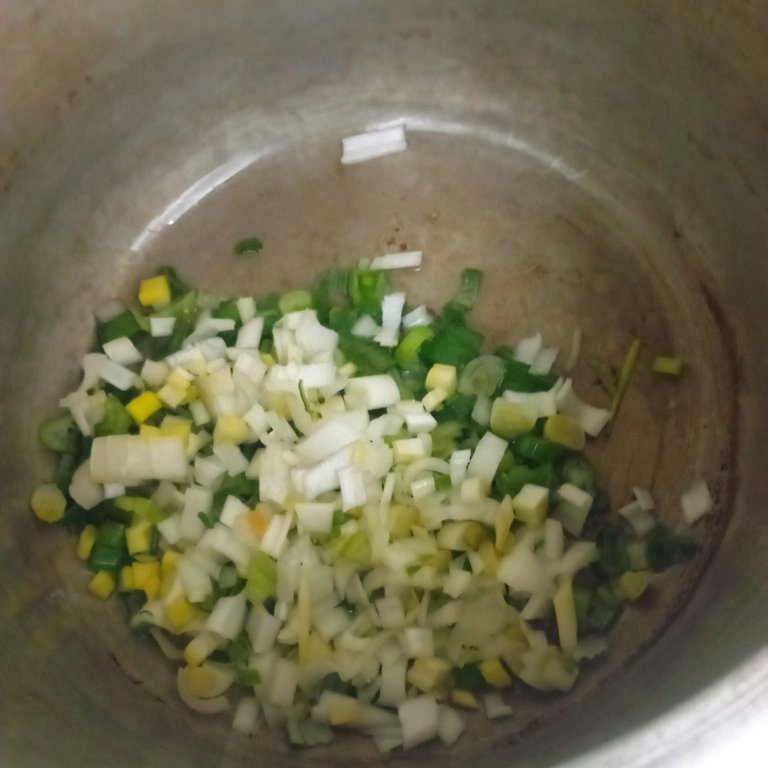

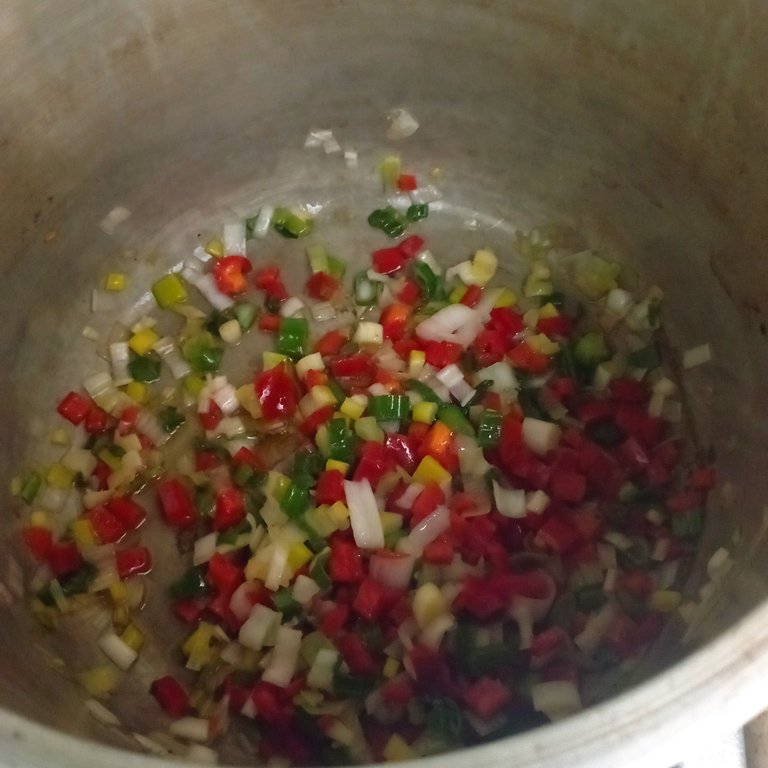

| Third Step | Tercer Paso |
|---|---|
Let the chives and paprika cook for 3 minutes and add the previously cooked and cut vegetables. Cook for approximately 10 minutes stirring frequently to avoid burning on the bottom. It is also important to take care of the intensity of the flame. After the time has elapsed, add the canned sardines, the lemon juice and turn off the heat. | Dejamos cocinar por 3 minutos el cebollín y el pimentón y adicionamos los vegetales previamente cocidos y cortados. Cocinamos por 10 minutos aproximadamente revolviendo con frecuencia para evitar que se queme en el fondo. También es importante cuidar la intensidad de la llama. Pasado el tiempo agregamos la sardina enlatada, el jugo de limón y apagamos el fuego. |

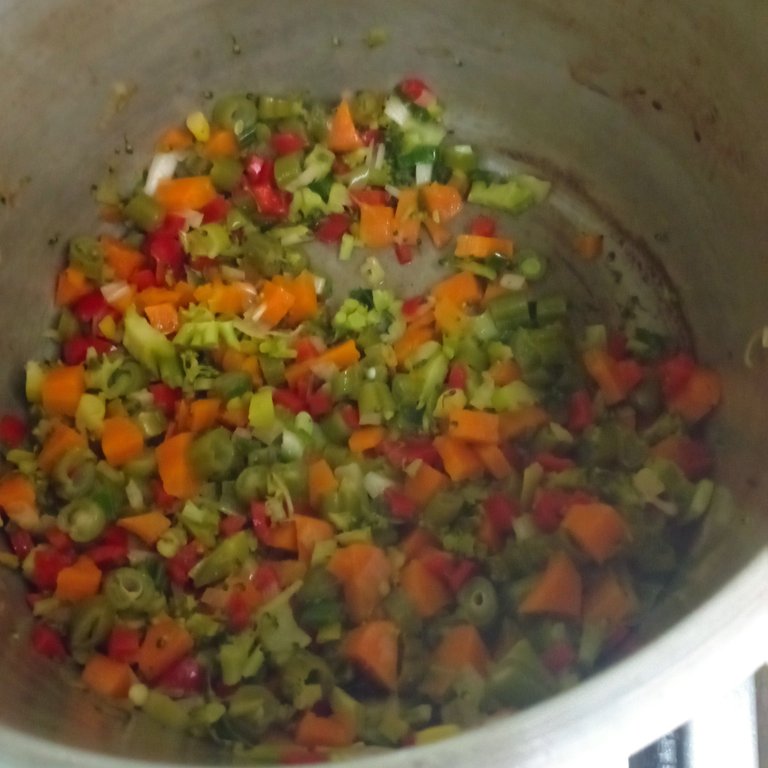

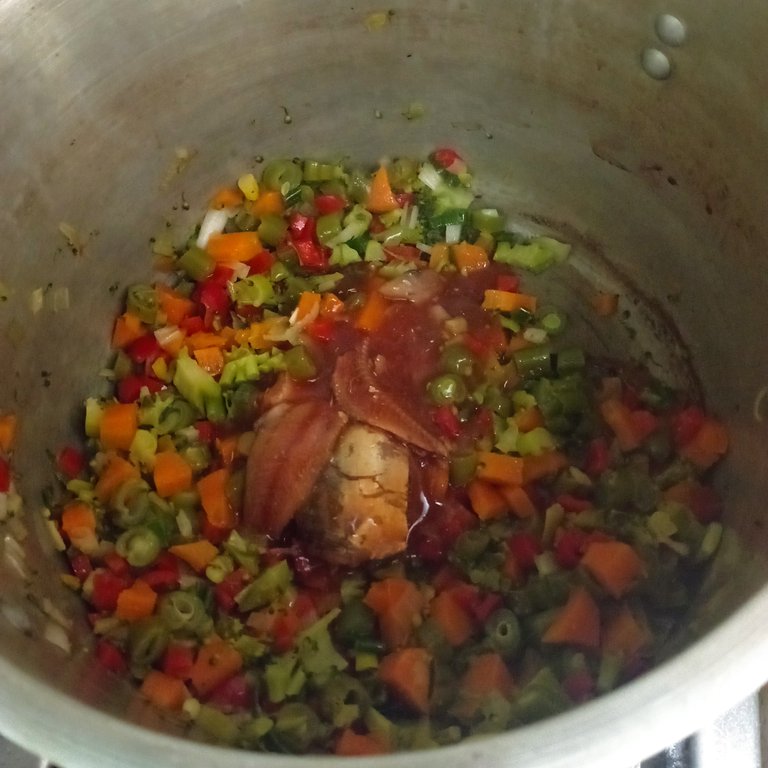

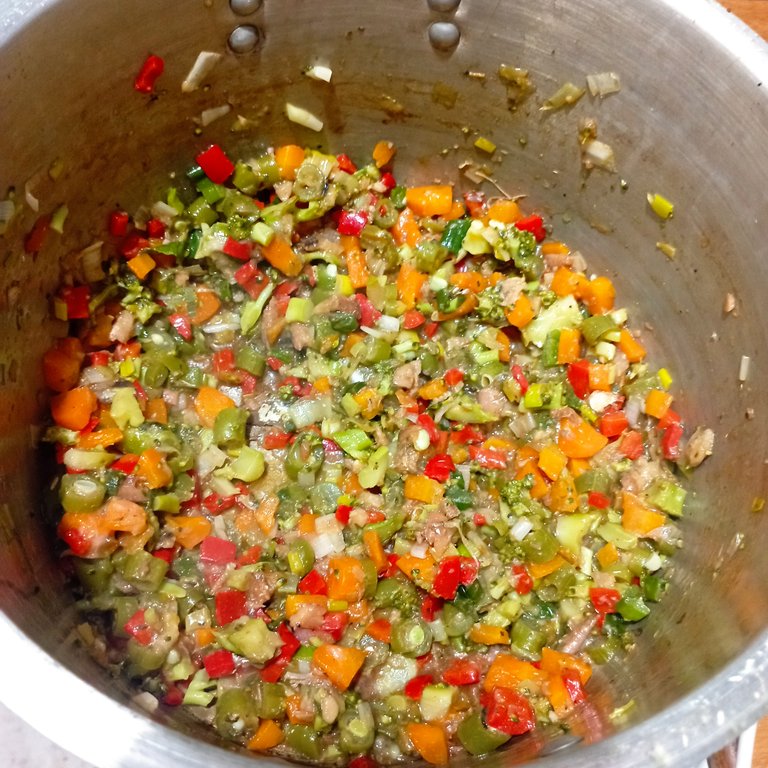

We can serve it with neutral crackers or toasted bread. Hot or cold it is equally delicious, it all depends on the taste and the occasion. This is my proposal and I liked it very much because there is an infinite variety of antipasto and it can be adapted to our tastes and resources. Bye bye. | Podemos servirlo con galletas neutras o tostadas de pan. Frío o caliente queda igualmente delicioso, todo depende del gusto y la ocasión. Esta es mi propuesta y me ha gustado mucho porque hay una variedad infinita se antipasto y se pueden adaptar a nuestros gustos y recursos. Chao chao. |

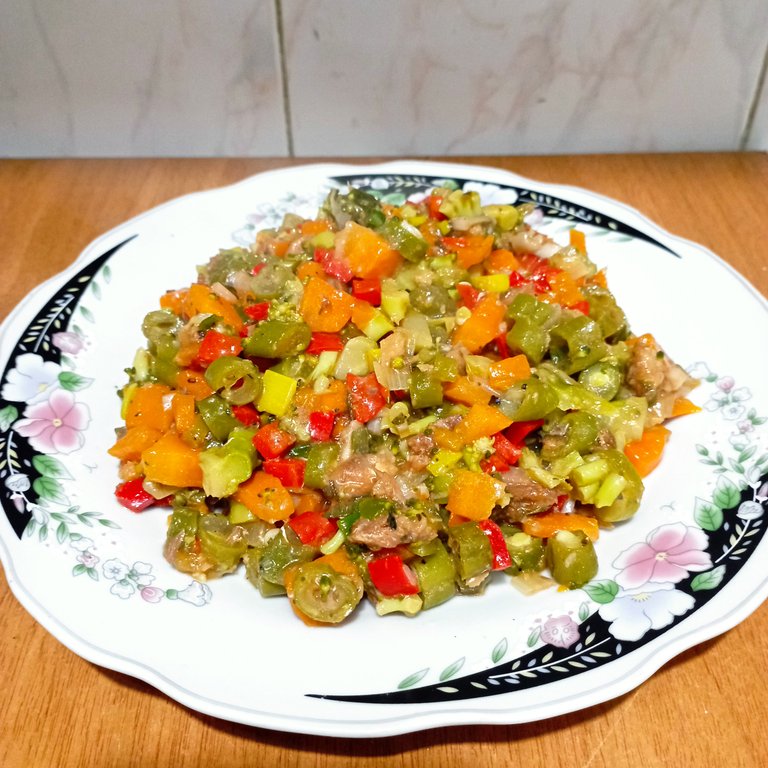

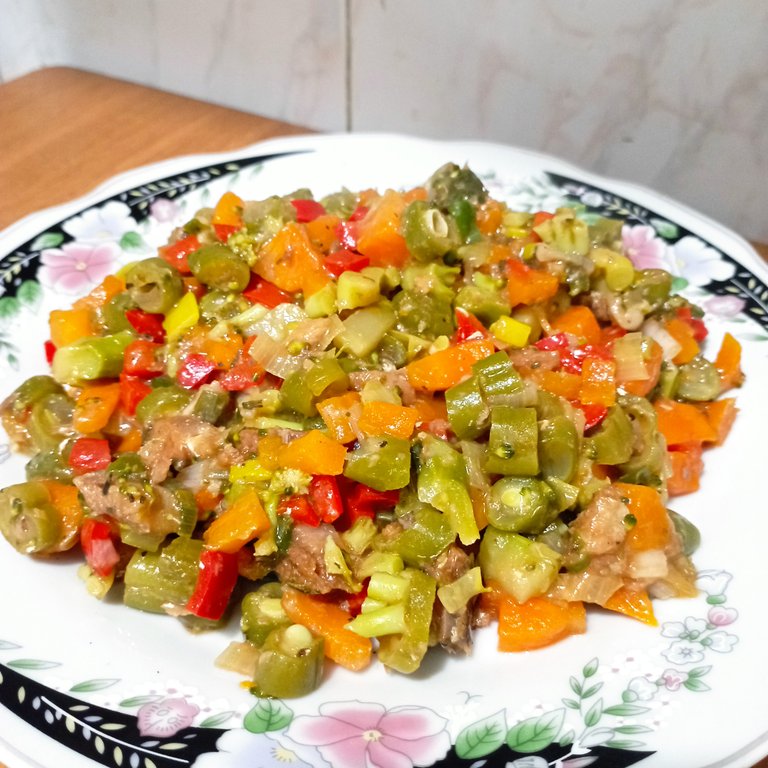

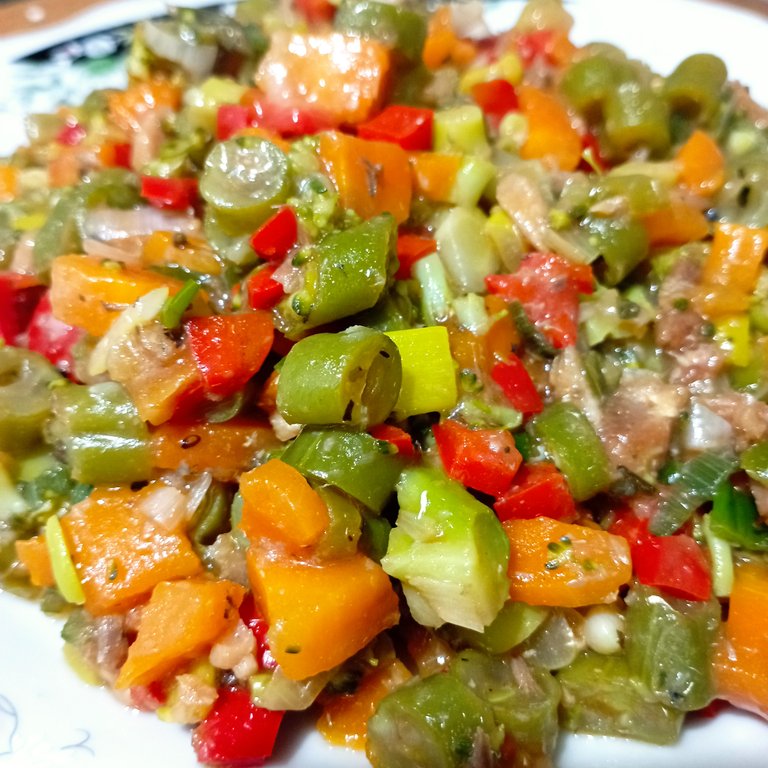

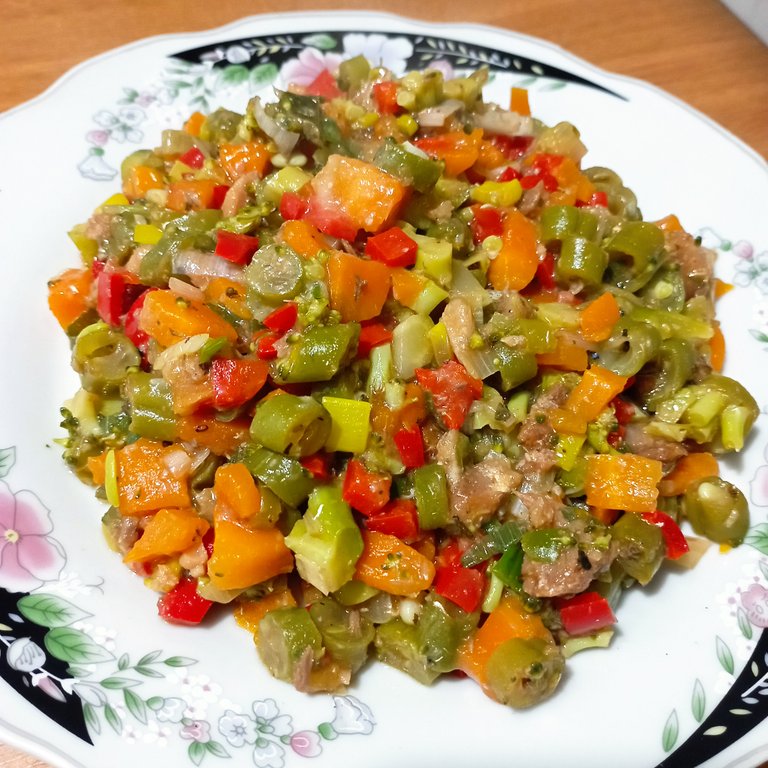

Imágenes Editadas En : Inshot
Fotos Tomadas Con Mi Teléfono Redmi 10 .

Images edited in: Inshot
Photos taken with my Redmi 10 phone.

